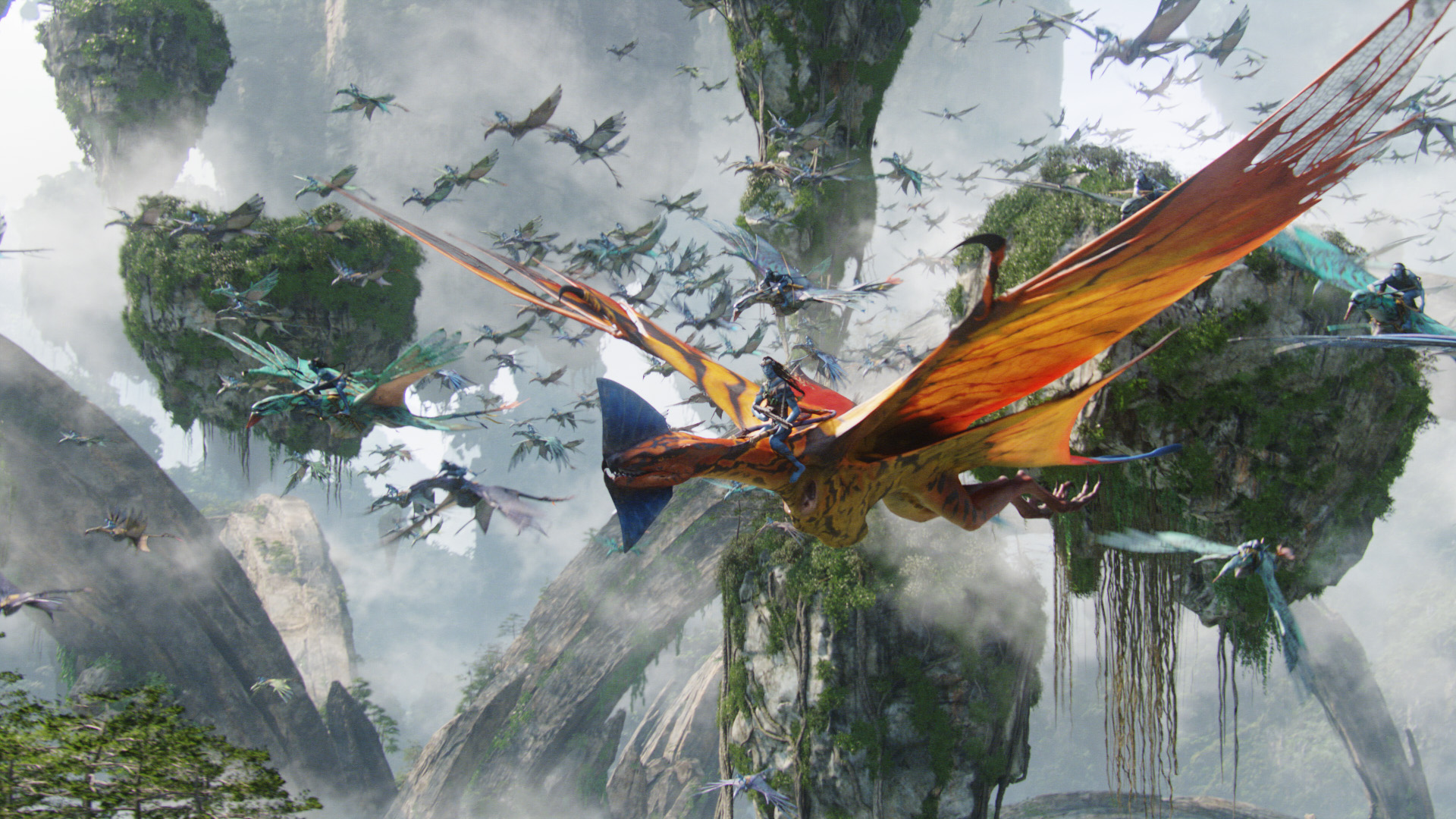“PantaRay: fast ray-traced occlusion caching of massive scenes” by Pantaleoni, Fascione, Hill and Aila
Conference:
Type(s):
Title:
- PantaRay: fast ray-traced occlusion caching of massive scenes
Presenter(s)/Author(s):
Abstract:
We describe the architecture of a novel system for precomputing sparse directional occlusion caches. These caches are used for accelerating a fast cinematic lighting pipeline that works in the spherical harmonics domain. The system was used as a primary lighting technology in the movie Avatar, and is able to efficiently handle massive scenes of unprecedented complexity through the use of a flexible, stream-based geometry processing architecture, a novel out-of-core algorithm for creating efficient ray tracing acceleration structures, and a novel out-of-core GPU ray tracing algorithm for the computation of directional occlusion and spherical integrals at arbitrary points.
References:
1. Aila, T., and Laine, S. 2009. Understanding the efficiency of ray traversal on GPUs. In Proc. High-Performance Graphics, 145–149. Google ScholarDigital Library
2. Borgeat, L., Godin, G., Blais, F., Massicotte, P., and Lahanier, C. 2005. GoLD: interactive display of huge colored and textured models. ACM Trans. Graph. 24, 3, 869–877. Google ScholarDigital Library
3. Budge, B. C., Bernardin, T., Sengupta, S., Joy, K., and Owens, J. D. 2009. Out-of-core data management for path tracing on hybrid resources. Comp. Graph. Forum 28, 2, 385–396.Google ScholarCross Ref
4. Christensen, P., Laur, D., Fong, J., Wooten, W., and Batali, D. 2003. Ray differentials and multiresolution geometry caching for distribution ray tracing in complex scenes. Comp. Graph. Forum 22, 3, 543–552.Google ScholarCross Ref
5. Christensen, P., 2008. Point-based approximate color bleeding. Pixar Technical Notes #08–01, July.Google Scholar
6. Cignoni, P., Ganovelli, F., Gobbetti, E., Marton, F., Ponchio, F., and Scopigno, R. 2004. Adaptive tetrapuzzles: efficient out-of-core construction and visualization of gigantic multiresolution polygonal models. ACM Trans. Graph. 23, 3, 796–803. Google ScholarDigital Library
7. Cook, R. L., Carpenter, L., and Catmull, E. 1987. The REYES image rendering architecture. Computer Graphics (Proc. SIGGRAPH 87) 21, 4, 95–102. Google ScholarDigital Library
8. Cook, R. L., Halstead, J., Planck, M., and Ryu, D. 2007. Stochastic simplification of aggregate detail. ACM Trans. Graph. 26, 3, 79. Google ScholarDigital Library
9. Crassin, C., Neyret, F., Lefebvre, S., and Eisemann, E. 2009. Gigavoxels: ray-guided streaming for efficient and detailed voxel rendering. In Proc. ACM SIGGRAPH Symposium on Interactive 3D graphics and Games, 15–22. Google ScholarDigital Library
10. Debevec, P. 1998. Rendering synthetic objects into real scenes: bridging traditional and image-based graphics with global illumination and high dynamic range photography. In Proc. ACM SIGGRAPH 98, 189–198. Google ScholarDigital Library
11. Gobbetti, E., Marton, F., and Iglesias Guitián, J. 2008. A single-pass GPU ray casting framework for interactive out-of-core rendering of massive volumetric datasets. The Visual Computer 24, 7, 797–806. Google ScholarDigital Library
12. Havran, V. 2000. Heuristic Ray Shooting Algorithms. Ph.d. thesis, Department of Computer Science and Engineering, Faculty of Electrical Engineering, Czech Technical University in Prague.Google Scholar
13. Hašan, M., Pellacini, F., and Bala, K. 2006. Direct-to-indirect transfer for cinematic relighting. ACM Trans. Graph. 25, 3, 1089–1097. Google ScholarDigital Library
14. Kautz, J., Sloan, P.-P., and Snyder, J. 2002. Fast, arbitrary BRDF shading for low-frequency lighting using spherical harmonics. In Proc. Eurographics Workshop on Rendering, 291–296. Google ScholarDigital Library
15. Lacewell, D., Burley, B., Boulos, S., and Shirley, P. 2008. Raytracing prefiltered occlusion for aggregate geometry. In Proc. IEEE Symposium on Interactive Raytracing, 19–26.Google Scholar
16. Ng, R., Ramamoorthi, R., and Hanrahan, P. 2004. Triple product wavelet integrals for all-frequency relighting. ACM Trans. Graph. 23, 3, 477–487. Google ScholarDigital Library
17. Pharr, M., Kolb, C., Gershbein, R., and Hanrahan, P. 1997. Rendering complex scenes with memory-coherent ray tracing. In Proc. ACM SIGGRAPH 97, 101–108. Google ScholarDigital Library
18. Ragan-Kelley, J., Kilpatrick, C., Smith, B. W., Epps, D., Green, P., Hery, C., and Durand, F. 2007. The lightspeed automatic interactive lighting preview system. ACM Trans. Graph. 26, 3, Article 25. Google ScholarDigital Library
19. Ramamoorthi, R., and Hanrahan, P. 2001. An efficient representation for irradiance environment maps. In Proc. ACM SIGGRAPH 2001, 497–500. Google ScholarDigital Library
20. Segal, M., and Akeley, K. 1999. The OpenGL Graphics System: A Specification (Version 1.2.1). Khronos group.Google Scholar
21. Snyder, J., 2006. Code generation and factoring for fast evaluation of low-order spherical harmonic products and squares. Microsoft TechReport MSR-TR-2006-53, May.Google Scholar
22. Upstill, S. 1990. The RenderMan Companion. Addison-Wesley.Google Scholar
23. Wald, I., Dietrich, A., and Slusallek, P. 2005. An interactive out-of-core rendering framework for visualizing massively complex models. In ACM SIGGRAPH 2005 Courses, 17. Google ScholarDigital Library
24. Wald, I. 2007. On fast construction of sah-based bounding volume hierarchies. In Proc. IEEE Symposium on Interactive Ray Tracing, 33–40. Google ScholarDigital Library
25. Yoon, S.-E., Lauterbach, C., and Manocha, D. 2006. R-LODs: fast LOD-based ray tracing of massive models. The Visual Computer 22, 9, 772–784. Google ScholarDigital Library





